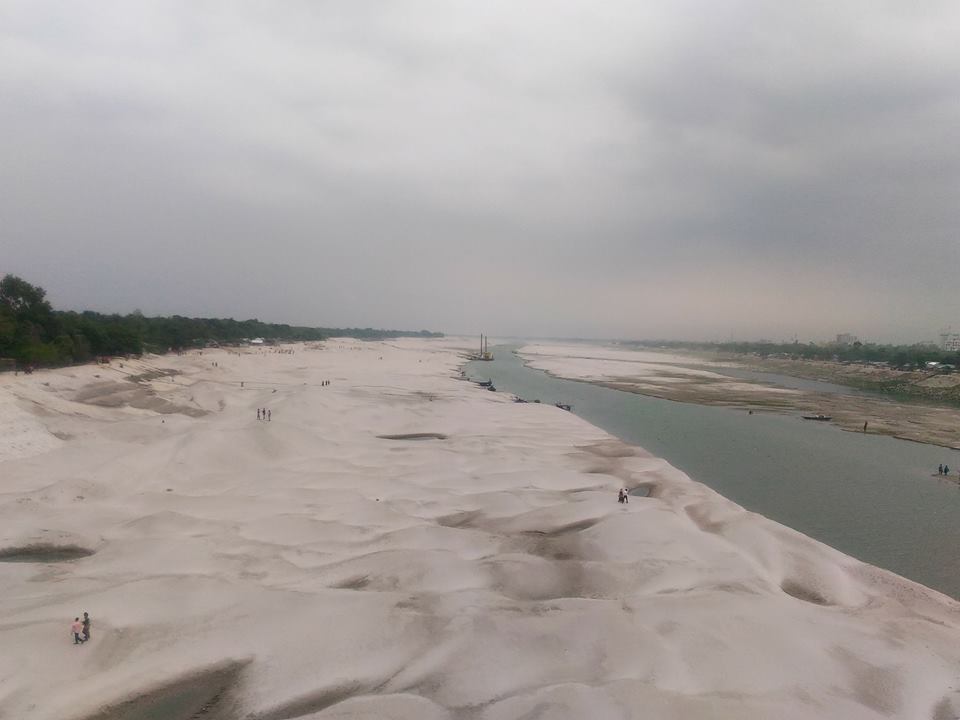
Climate change cast a shadow/ Farming struggles in Northern Bangladesh

It is now Shraban, considered as the peak of Bangladesh’s monsoon season. As expected, many parts of the country are experiencing rainfall---some even grappling with flooding. But the scenario is starkly different in the three northern border districts---Thakurgaon, Dinajpur, and Panchagarh. Despite being in the heart of the rainy season, these areas have seen unusually low rainfall, raising serious concern among farmers.
According to metrological office in Dhaka, Bangladesh typically receives an average of 2,300 millimetres of rainfall each year depending on region, season and prevailing weather conditions. The monsoon season generally spans the months of Ashar and Shraban, with intermittent rain often continuing until Kartik. In recent years, however, climate change has significantly disrupted these traditional rainfall patterns.
Declining Rainfall in Panchagarh/
According to the Tetulia Meteorological Observatory in Panchagarh, only 449.6 millimetres of rain was recorded in June this year, compared to 1,151.1 millimetres during the same period in 2023. Up to July 15 this year, the district received a mere 49 millimetres of rain—drastically lower than previous years.
Farmers lamented that by this time, the fields should have been naturally soaked but they are now relying on irrigation to prepare seedbeds for transplanted Aman paddy paying about Tk 300 per hour for irrigation, which is driving up production costs and making it difficult to break even.
Abdul Matin, Deputy Director of the Department of Agricultural Extension (DAE) in Panchagarh noted that the delay in rainfall has made Aman cultivation more challenging. As a result, farmers are increasingly dependent on irrigation, which is significantly raising their expenses.
Similar Conditions in Dinajpur/
Dinajpur is experiencing a similar situation. In the first half of July, the district recorded just 42 millimetres of rainfall—far below the seasonal average for this time of year.
Tofazzal Hossain, local meteorological officer said his office recorded 378 millimetres of rain in June. There is still a possibility of normal rainfall in the latter half of the month, according to him.
Md. Anisuzzaman, Additional Deputy Director of DAE in Dinajpur admitted the fact that Aman cultivation across Dinajpur, Thakurgaon, and Panchagarh is heavily dependent on rainfall.
“This year, we aimed to plant Aman on approximately 260,000 hectares in Dinajpur alone. But due to inadequate rainfall, many farmers are now relying on irrigation.”
Farmers in Thakurgaon Also Struggling/
Rainfall has also dropped significantly in Thakurgaon. The district received 344 millimetres of rain during June–July last year, but this year the figure has fallen to just 144 millimetres. Farmers say that areas once naturally nourished by rain for Aman seedling transplantation now require irrigation, increasing their expenses and cutting into their profits.
Majedul Islam, Deputy Director of the Thakurgaon Agricultural Office, stated that the reduced rainfall is having a serious impact on agriculture. Farmers are increasingly relying on irrigation to plant Aman. However, any delays in planting may jeopardize the early crops.
Concerns Over Aus and Jute Cultivation/
This situation has also posed a serious threat to Aus paddy and jute cultivation across these three districts. Because Aus paddy depends entirely on rainfall, farmers are becoming increasingly worried about its prospects. Meanwhile, jute growers are facing difficulties in obtaining enough water for retting their fibres.
Meteorologists attribute these shifts to climate change. Global warming is increasing temperatures, which in turn raises evaporation rates, altering both the timing and intensity of rainfall.
They said, this growing unpredictability is directly affecting agriculture.
Tofazzal Hossain of Dinajpur meteorological office added that variations in rainfall largely depend on low-pressure systems in the Bay of Bengal. There’s hope that rainfall will return to normal by the end of the month.
This climate expert warn that if this trend continues, it could have serious implications for food security the areas and the agricultural sustainability.
Aman/
Editor & Publisher: Dr. Amanur Aman, M. Phil (IUK), PhD (NBU-Darjeeling)
Advisor Editor: Ajoy Maitra
Managing Editor: Shanaz Aman, Executive Editor; Mythos Aman
News & Commercial Offices: T&T Road, Thana Traffic More, Kushtia-7000.
Mobile: 01713914570, E-mail: editor@thekushtiatimes.com
All rights reserved © 2022 thekushtiatimes.com